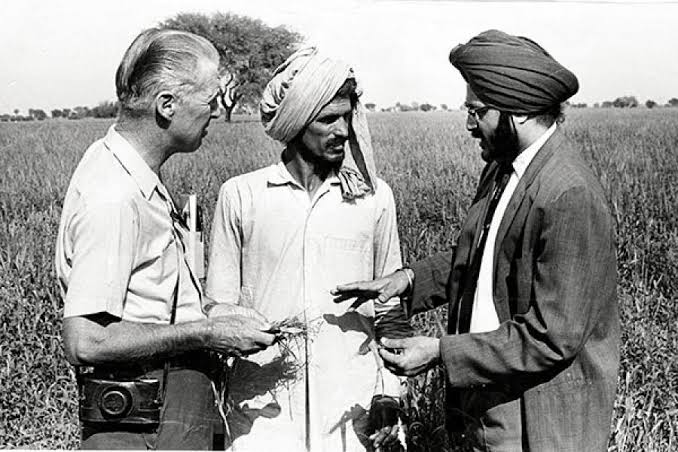As a battalion of resolute Indian farmers keeps up its barricade of New Delhi, Prime Minister Narendra Modi confronts potentially one of the trickiest challenges to his administration and reform agendas.
With the uprising protests embarking their third week, let’s understand why it holds importance for us?
What is the state of Indian agriculture?

India’s farming sector is vast and disturbed; It contributes to the livelihood of nearly 70 per cent of the country’s 1.3 billion people and funds for around 15 per cent of the $2.7-trillion economy.
The “Green Revolution” of the 1970s swivelled India from a country confronting regular food shortages into one with abundance and a major exporter.
But for the past few decades, farm incomes have remained greatly stagnant and the sector is in sore need of investment and modernisation.
Only one in a hundred farmers own over 10 hectares, according to a 2015-16 agriculture ministry census.
India hands out an approximate $32 billion in subsidies to farmers yearly, according to the finance ministry data.
How are farmers coping?

Water scarcities, floods and increasingly volatile weather resulted in climate change, as well as the deficit, have taken a huge expense on farmers.
According to a Punjab administration report in 2017, the northern state will consume all its groundwater reserves by the year 2039.
In the last two decades, three lakh farmers committed suicide. Nearly 10,300 did so in 2019, according to the latest authorized figures. As petrifying as it sounds, farmer suicides account for 11.2% of all suicides in India.
Why is the government answerable?

Indian governments have long made big vows to farmers and Prime Minister Narendra Modi is no exception, vowing to double their revenues by 2022.
In September, parliament passed three laws that facilitated farmers to sell to any buyer they preferred, rather than to commission agents at state-controlled markets.
These markets were arranged in the 1950s to halt the exploitation of farmers and pay a minimum support price (MSP) for certain harvests.
The system has led to farmers occasionally growing crops unsuited to the local environment, such as thirsty rice in Punjab, and can be productive ground for corruption.
But many farmers feel the MSP as a crucial safety net and are suspicious of being incapable to play against the large farms and being compensated low prices by big corporations.
“The laws will harm the farmers and in turn destroy our livelihood,” says Sukhwinder Singh, a farm labourer who cycled 400 kilometres (250 miles) to the protests.
And further added, “Land, cattle and farmers will be enslaved by rich people. This government wants to finish us”.
Farmers from six states, comprising Uttar Pradesh, Haryana, Uttarakhand, Rajasthan, Kerala and Punjab are revolting in and around the national capital against the centre’s ‘historic reforms’.
The march, originally initiated by the All Indian Kisan Sangarsh Coordination Committee (AIKSCC)– a body of approximately 200 farmers’ organisations across India that has earned assistance from nearly 500 farmers’ bodies.
From Bollywood actors, singers to award receiving sportspersons, many have emerged in the backing of the farmers and pleaded the centre to deliver justice.

Also Read: Know Which Celebrities Are In Support Of The Farmers’ Protest
Ex-Sportspersons to withdraw their Award, in support of Farmers against the controversial farm laws
Prime Minister, Narendra Modi, 70, has attempted to brush off the current turmoil as being fired by an opportunistic opposition “misleading” the farmers.
Some in his party have expectedly branded the protesters — many of whom are Sikhs — as “hooligans, Sikh separatists and anti-nationals”. But with the farmers, it is distinct. They appreciate extensive support among Indians and avoid their conflicts with Modi’s self-proclaimed image as a winner of the poor.
In pastoral areas, where 70 per cent of Indians live, there is already a heightening perception that Modi is cosy with big industry and billionaire industrialists
Well, there are several things that are outdated in the agriculture division.
But such reforms cannot be shoved, This is so far, one of the biggest challenges for the government to tackle.
Also, read:
















